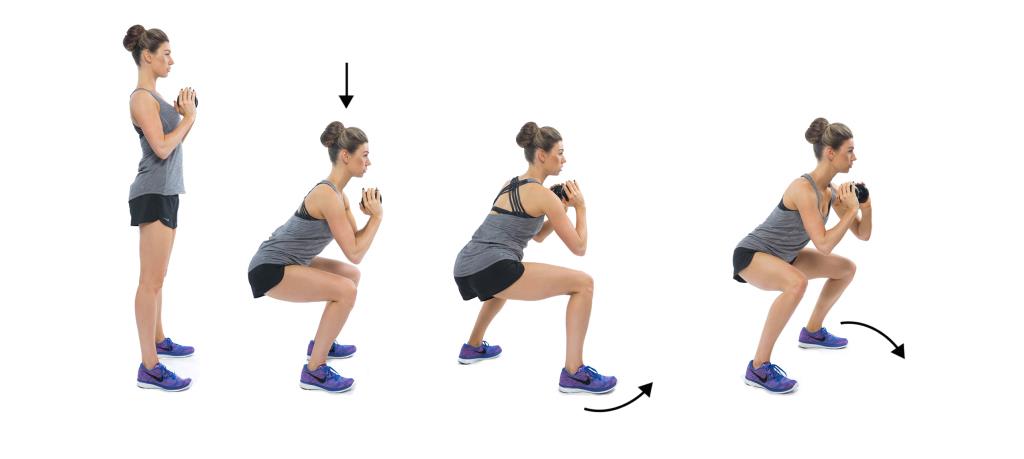7 Butt Exercises You Need to Start Doing
Let’s start with a little anatomy less, shall we?
Your butt is made up of fat and muscle – 3 muscles, in fact. The main muscles in the butt are the gluteus maximus, gluteus medius, and gluteus minimus. Like every other muscle in your body, there’s one highly effective thing you can do to build your butt muscles up and make them bigger.
Care to take a guess?
If you said exercise, pat yourself on the back because you’re right!
That’s right – if you want to get a bigger butt, you should start doing exercises that target your glutes.
1) Squats
Squats are a powerhouse exercise that can significantly contribute to developing a fuller and more sculpted butt. Here are the key benefits of integrating squats into your workout routine:
- Glute Engagement: Squats target the glute muscles, particularly the gluteus maximus, to help shape and strengthen your buttocks.
- Compound Movement: Squats are a compound exercise that also engages your quads, hamstrings, and core, promoting balanced lower body development.
- Muscle Building: By placing resistance on your glutes, squats encourage muscle growth and hypertrophy, leading to a more defined posterior.
- Calorie Burn: Squats are a multi-joint movement that burns a significant number of calories, aiding in overall fat loss and highlighting your glute muscles.
- Functional Strength: Squats improve your functional strength for everyday activities like sitting, standing, and lifting objects.
How to Perform Squats:
Starting Position:
- Stand with your feet hip-width apart or slightly wider.
- Keep your chest up, shoulders back, and your gaze forward.
Execution:
- Initiate the movement by pushing your hips back as if you’re sitting into an imaginary chair.
- Bend your knees and lower your body while keeping your back straight. Your knees should track in line with your toes.
Depth: Lower your hips until your thighs are at least parallel to the ground or lower, ensuring proper form and depth.
Ascent:
- Push through your heels and engage your glutes to return to the standing position.
- Squeeze your glutes at the top of the movement.
Breathing:
- Inhale as you lower your body.
- Exhale as you push through your heels and rise back up.
Repetition:
- Aim for 3-4 sets of 8-12 repetitions, depending on your fitness level.
Tips:
- Keep your knees in line with your toes to protect your knees.
- Maintain a neutral spine throughout the movement.
- Don’t let your knees collapse inward; focus on pushing them out slightly.
Incorporate squats into your lower body workout routine 2-3 times per week. Start with bodyweight squats and gradually add weight as you become more comfortable and proficient in the movement.
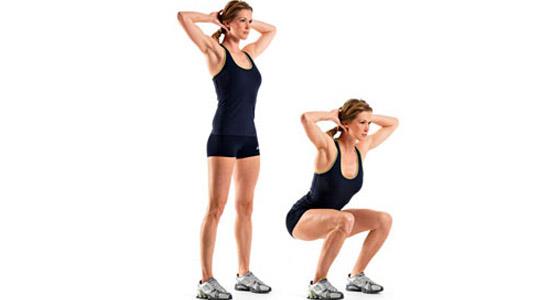
2) Lunges
Lunges are a versatile and effective exercise that can contribute to building a more prominent and sculpted butt. Here are the key benefits of incorporating lunges into your workout routine:
- Glute Activation: Lunges heavily engage the glute muscles, making them a great exercise to target and strengthen your buttocks.
- Muscle Development: Lunges work the gluteus maximus, hamstrings, and quadriceps, promoting well-rounded muscle development in the lower body.
- Functional Movement: Lunges mimic everyday movements like walking and stepping, enhancing your body’s functional strength and balance.
- Core Stabilization: During lunges, your core muscles work to stabilize your body, leading to improved core strength and posture.
- Variation: Lunges offer various modifications and variations, allowing you to tailor the exercise to your fitness level and goals.
How to Perform Lunges:
Starting Position:
- Stand with your feet hip-width apart and your hands on your hips or by your sides.
Execution:
- Step one foot forward, taking a long stride.
- Lower your body by bending both knees, ensuring your front knee is directly above your ankle and your back knee hovers above the ground.
Push Back:
- Push through your front heel to return to the starting position.
- Engage your glutes and hamstrings to power the movement.
Repetition:
- Complete the desired number of repetitions on one leg before switching to the other.
Tips:
- Keep your upper body upright and maintain a straight line from your head to your hips.
- Avoid letting your front knee go beyond your toes to protect your knee joint.
- Engage your core muscles throughout the movement for stability.
Variations:
- Reverse Lunges: Step backward instead of forward.
- Walking Lunges: Take steps while continuously lunging forward.
- Lateral Lunges: Step to the side, bending one knee while keeping the other leg straight.
- Weighted Lunges: Hold dumbbells or other weights for added resistance.
Incorporate lunges into your lower body workout routine 2-3 times per week. Start with bodyweight lunges and gradually add resistance as you become more comfortable with the movement. Always prioritize proper form.
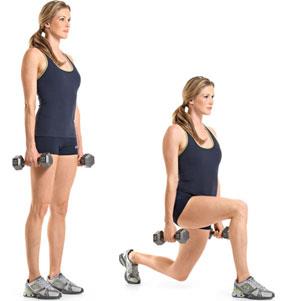
3) Stairs
Stair climbing is a fantastic exercise that can contribute to achieving a more sculpted and shapely butt. Here are the key benefits of including stair climbing in your workout routine:
- Glute Activation: Stair climbing intensely engages the glute muscles, helping to tone and strengthen them for a more defined appearance.
- Cardiovascular Workout: Climbing stairs provides an excellent cardiovascular workout, enhancing your overall fitness and promoting fat loss, which can further highlight your butt muscles.
- Muscle Endurance: Consistently climbing stairs builds muscle endurance in your glutes and legs, allowing you to endure longer workouts and engage in other activities more effectively.
- Functional Strength: Stair climbing mimics real-life movements, making it a functional exercise that translates into improved everyday activities and sports performance.
- Calorie Burn: Stair climbing burns a significant amount of calories, contributing to weight management and overall body toning.
How to Perform Stair Climbing:
Find a Staircase: Locate a set of stairs that you can safely climb. It could be a staircase at home, in a building, or at a park.
Warm-Up: Begin with a light warm-up, like brisk walking or jogging, for a few minutes to prepare your muscles for the workout.
Climbing Technique:
- Start by stepping onto the first step with one foot.
- Push through your heel to lift your body upward, engaging your glutes and hamstrings.
- Ascend the stairs using controlled and deliberate movements.
- Make sure to engage your core muscles for stability.
Intensity:
- To intensify the workout, consider skipping steps or taking two steps at a time.
- Focus on driving through your heels and using your glutes to power each step.
Cool Down: Once you’ve completed your stair climbing session, cool down with a few minutes of walking and light stretching.
Tips:
- Maintain an upright posture to prevent strain on your back.
- Land softly on your feet to reduce impact on your joints.
- Start with a moderate pace and increase intensity gradually as you become more comfortable.
Incorporate stair climbing into your workout routine a few times a week. You can vary the number of sets and the intensity based on your fitness level. Always prioritize safety, listen to your body, and consult with a healthcare professional if you have any concerns or health conditions.
4) Hip Raises
Hip Raises, also known as Glute Bridges, are an excellent exercise to target and develop your glutes. Incorporating Hip Raises into your workout routine offers several benefits:
- Glute Activation: Hip Raises effectively activate and engage the glute muscles, promoting their growth and overall enhancement.
- Isolation: This exercise isolates the glutes, making it ideal for focused muscle targeting and development.
- Strength Building: Hip Raises help strengthen the glute muscles, hamstrings, and lower back, contributing to a balanced lower body strength.
- Posterior Chain Development: Engaging the entire posterior chain, including the glutes and lower back, improves muscle balance and supports better posture.
- Core Engagement: While performing Hip Raises, your core muscles also engage to stabilize the body, resulting in improved core strength and stability.
How to Perform Hip Raises (Glute Bridges):
Starting Position:
- Lie on your back with your knees bent and feet flat on the floor, hip-width apart.
- Keep your arms at your sides with your palms facing down.
Execution:
- Press through your heels and lift your hips off the ground, creating a straight line from your shoulders to your knees.
- Squeeze your glutes at the top of the movement and engage your core muscles.
Ensure your feet remain parallel and your knees are aligned with your hips.
Lowering Phase:
- Lower your hips back down with control, but do not touch the ground. Maintain tension in your glutes.
Breathing:
- Inhale as you lower your hips.
- Exhale as you lift your hips and contract your glutes.
Repetition and Sets:
- Aim for 3-4 sets of 12-15 repetitions.
Tips:
- Avoid arching your lower back excessively.
- Keep your neck relaxed and your gaze focused on the ceiling.
- To intensify the exercise, place a resistance band above your knees or use a stability ball to rest your feet on.
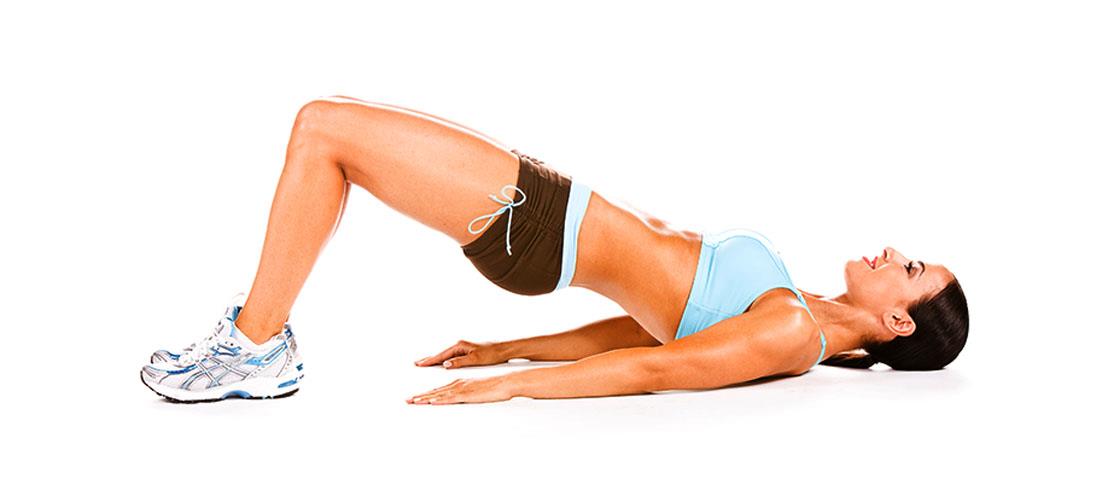
5) RDL’s
Romanian Deadlifts (RDL) are a highly effective exercise for targeting and enhancing your glutes. Here are some key benefits of including RDLs in your workout routine:
- Glute Activation: RDLs target the glute muscles, particularly the gluteus maximus, which is essential for achieving a rounder and firmer butt.
- Muscle Strengthening: RDLs help build strength in your hamstrings, lower back, and glutes, creating a well-balanced lower body and contributing to an improved overall physique.
- Hypertrophy: Performing RDLs with proper technique and gradually increasing weight can lead to muscle hypertrophy, resulting in larger and more defined glutes over time.
- Posterior Chain Development: RDLs engage the entire posterior chain, including the glutes, hamstrings, and lower back, promoting balanced muscle development and a toned appearance.
- Functional Movement: RDLs mimic bending and lifting movements often used in daily activities, enhancing your overall functional strength and mobility.
How to Perform Romanian Deadlifts (RDL):
Starting Position:
- Stand with your feet hip-width apart and a slight bend in your knees.
- Hold a barbell or dumbbells in front of your thighs with an overhand grip.
Execution:
- Keeping your back straight, hinge at your hips and push your glutes backward as you lower the weights towards the ground.
- Lower the weights while maintaining a slight bend in your knees. Your spine should remain neutral.
- Lower the weights until you feel a stretch in your hamstrings, but stop before your lower back starts to round excessively.
Stretch and Contraction:
- Engage your glutes and hamstrings to reverse the movement. As you return to the starting position, squeeze your glutes at the top of the movement.
- Keep the weights close to your body throughout the exercise.
Breathing
- Inhale as you lower the weights.
- Exhale as you lift the weights and contract your glutes.
Repetition and Sets:
- Aim for 3-4 sets of 12-15 repetitions.
Tips:
- Maintain a straight spine throughout the movement.
- Focus on the hip hinge and the stretch in your hamstrings.
- Start with lighter weights to master the form before gradually increasing the load.
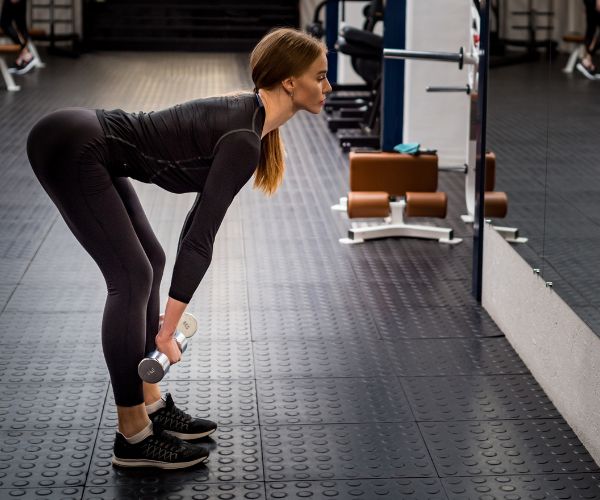
6) Step Ups
Step ups are a dynamic and effective exercise that can contribute to building a more defined and shapely butt. Here are the key benefits of incorporating step ups into your workout routine:
- Glute Activation: Step ups target the glute muscles, particularly the gluteus maximus, helping to enhance the size and tone of your buttocks.
- Unilateral Movement: Step ups are a unilateral exercise, which means they work one leg at a time. This helps in addressing muscle imbalances and promoting balanced development.
- Functional Strength: Step ups simulate movements you encounter in daily life, such as climbing stairs, making them a practical exercise to improve overall functional strength.
- Cardiovascular Benefits: Performing step ups at a brisk pace can elevate your heart rate, providing cardiovascular benefits while targeting your glutes.
- Variety and Progression: Step ups can be modified by adjusting the step height or adding weights, allowing you to progressively challenge your glute muscles.
How to Perform Step Ups:
Starting Position:
- Stand in front of a sturdy bench, box, or step platform.
- Keep your chest up, shoulders back, and engage your core.
Execution:
- Step onto the platform with one foot, pushing through your heel.
- Use the muscles of the leading leg (the one on the platform) to lift your body upward.
Full Extension:
- Fully extend your hips and knee of the leading leg as you stand on the platform.
- Keep your other foot hovering just above the ground.
Lowering Phase:
- Lower your body back down by gently bending the knee of the leading leg.
- Tap your trailing foot lightly on the ground if needed.
Repetition and Sets:
- Aim for 3-4 sets of 12-15 repetitions.
Tips:
- Maintain proper posture throughout the movement, avoiding excessive leaning forward or backward.
- Focus on pushing through the heel of the leading leg to activate the glutes.
- Keep your movements controlled and avoid using momentum.
Variations:
- Weighted Step Ups: Hold dumbbells or a barbell for added resistance.
- Lateral Step Ups: Step onto the platform from the side to engage different glute muscles.
- Explosive Step Ups: Add power by driving upward forcefully during the ascent.
Incorporate step ups into your lower body workout routine 2-3 times per week. Begin with bodyweight step ups and progress to more challenging variations as you become more comfortable with the movement.
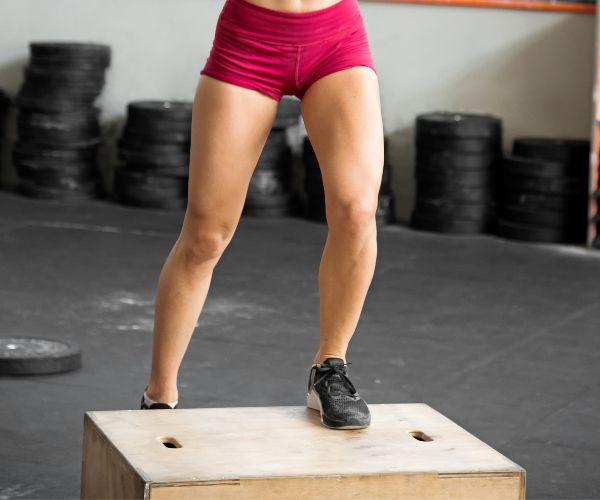
7) Walking Squats
Ready to challenge yourself and really feel the burn? This is a fun one! Walking squats tone your glutes and work your entire core.
Walking squats, also known as squat walks or sumo walks, are a unique and effective exercise that can contribute to building a firmer and more sculpted butt. Here are the key benefits of incorporating walking squats into your workout routine:
- Glute Engagement: Walking squats intensely activate the glute muscles, making them an excellent exercise to target and strengthen your buttocks.
- Muscular Endurance: This exercise challenges your glutes, hamstrings, and quadriceps, promoting muscle endurance and overall lower body stamina.
- Lateral Movement: Walking squats involve lateral movement, targeting different angles of your glute muscles and helping to enhance their overall shape.
- Core Stabilization: As you move laterally, your core muscles engage to stabilize your body, leading to improved core strength and balance.
- Cardiovascular Component: Walking squats involve both strength and cardiovascular elements, making them a time-efficient way to work on muscle tone and cardiovascular fitness.
How to Perform Walking Squats:
Starting Position:
- Stand with your feet wider than hip-width apart and toes slightly turned out.
- Place your hands on your hips or in front of you for balance.
Execution:
- Lower your body into a squat position by bending your knees and hips. Imagine sitting back into an imaginary chair.
Movement:
- Instead of rising back up, take a step to the side with one foot.
- As you step, keep your hips low and maintain the squat position.
- Follow with the other foot, taking another step to the side.
Continued Steps:
- Keep moving laterally in a controlled squat position, alternating steps with each foot.
Distance and Repetition:
- Perform walking squats for a specific distance or for 3-4 sets of 12-15 repetitions.
Tips:
- Keep your chest up and your back straight throughout the movement.
- Focus on keeping your knees in line with your toes and avoid letting them collapse inward.
- Engage your glutes and core muscles to stabilize your body as you move.
Incorporate walking squats into your lower body workout routine 2-3 times per week. You can use them as part of a warm-up, a stand-alone exercise, or even in a circuit. Adjust the intensity by varying the step distance and squat depth.
